The Importance of Bird Feeders
Bird feeding encourages healthy birds and provides necessary food during harsh weather. It also offers entertainment and relaxation, helps maintain a balanced ecosystem, and creates a connection with nature.
Encourages healthy birds
I love seeing birds flutter and chirp in my backyard, knowing they’re getting a good meal from the feeders I set up. It’s heartwarming to know that these feeders play a role in keeping them healthy.
They can find hearty seeds and fresh water even when it’s tough for them out in nature. With about 25% of their diet coming from my feeder, I’m helping fill their tummies with the nutrients they need to live well.
Setting up a bird feeder also means I get to help our feathered friends during rough weather when food is hard to find. In winter or dry spells, my backyard becomes a little haven for them.
The right mix of seeds can boost their health, giving them energy to fly strong and keep warm. By offering this support, I’m making life easier for all kinds of beautiful birds that visit me each day.
Provides food during harsh weather
Bird feeders play a crucial role in providing food for birds during tough weather conditions like harsh winters. These feeders can be a lifeline, especially when natural food sources become scarce due to extreme weather.
The supplemental nutrition provided by bird feeders helps birds maintain their energy levels and survive through challenging times. For instance, when snow covers the ground or temperatures drop significantly, bird feeders offer a reliable source of sustenance for our feathered friends.
In such adverse conditions, bird lovers can make a significant difference by ensuring that their bird feeders are well-stocked with appropriate foods. This support not only aids the survival of individual birds but also contributes to maintaining healthy bird populations overall.
Offers entertainment and relaxation
Bird feeders offer an enjoyable way to watch birds up close and connect with nature. It’s so relaxing to observe the beautiful colors and behaviors of different bird species right from my backyard.
The entertainment value is immense, especially during stressful times; it brings a sense of peace and joy to see them flitting around the feeder. Plus, it’s fascinating to learn about their feeding habits and unique behaviors, which adds an educational aspect to the entertainment.
Setting up bird feeders has truly brought me closer to nature in a fun and enjoyable way. It’s amazing how these little creatures can bring such relaxation and delight into my everyday life while supporting their well-being at the same time!
Helps maintain a balanced ecosystem
Bird feeders play a crucial role in maintaining a balanced ecosystem by providing supplemental food for birds, especially during harsh seasons and in areas where natural sources may be scarce.
This helps ensure that bird populations have consistent access to food, supporting their overall health and survival. Additionally, the presence of bird feeders can attract a diverse range of species to an area, contributing to the biodiversity of the local ecosystem and promoting a healthier balance within the environment.
By offering support to birds through well-placed and maintained bird feeders, we can positively impact our surroundings by fostering wildlife conservation and encouraging sustainable habitat preservation.
Creates a connection with nature
Watching birds at the feeders creates a peaceful and calming connection with nature. Observing their colorful feathers, unique behaviors, and lively interactions with each other can bring joy and relaxation to our daily lives.
As I fill my bird feeder, I feel like I’m contributing positively to the environment while enjoying the beauty of nature right in my backyard. It’s fascinating to witness different bird species visiting the feeder throughout the day, reminding me of the diversity and wonder of the natural world around me.
By bringing birds closer to us through feeders, we can appreciate their role in maintaining ecological balance and gain a deeper understanding of their lives and habits. This simple act also fosters a sense of responsibility toward wildlife conservation as we provide them with a safe space for food and shelter during all seasons.
Choosing the Right Bird Feeder
When it comes to choosing the right bird feeder, placement and maintenance are key factors to consider. Additionally, understanding the types of bird feeders available and what kind of bird food is appropriate can help create a thriving feeding station for our feathered friends.
Placement and maintenance
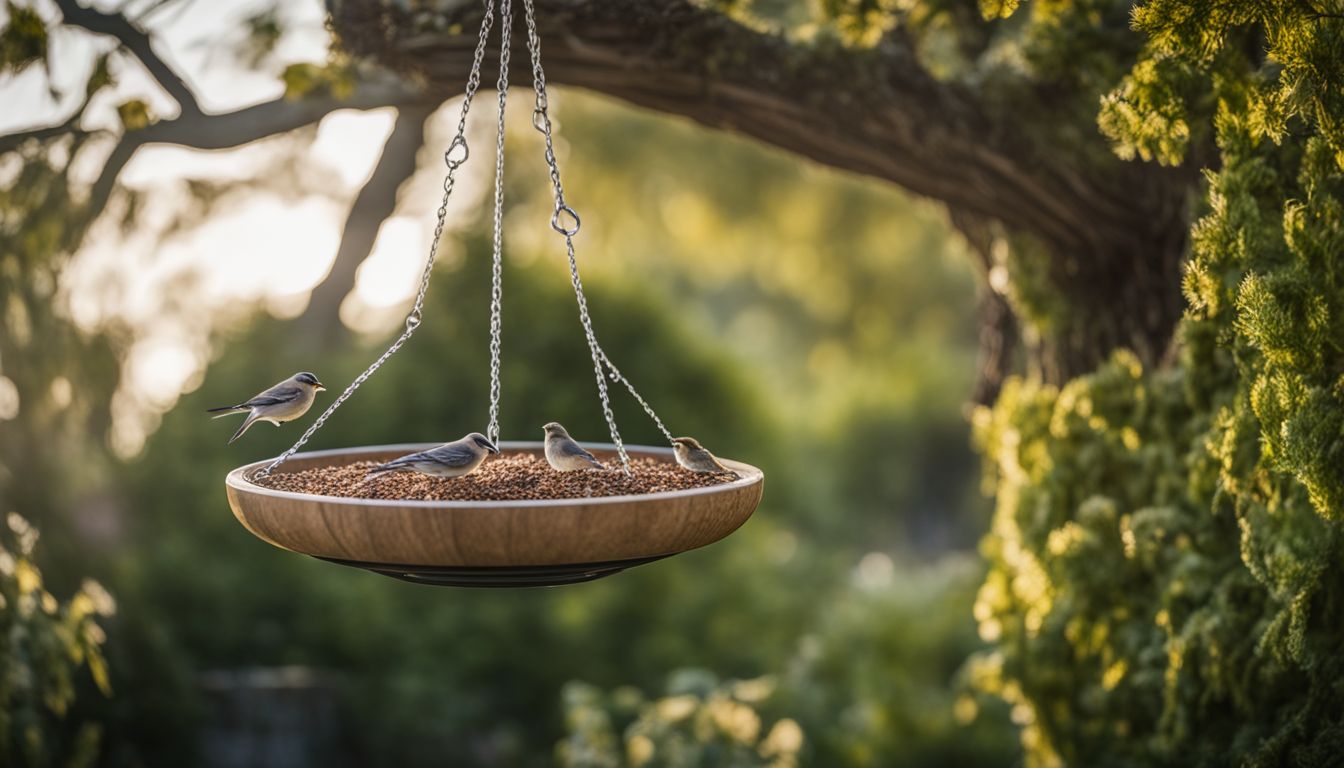
To attract birds to your yard, place the bird feeder in an open area with some nearby trees or shrubs. This will give birds a safe landing spot and provide cover from predators. Keep the feeder clean and free of mold to prevent diseases from spreading among the birds, and regularly refill it with fresh bird food to keep our feathered friends coming back for more.
It’s important to place the feeder where you can easily see it from inside your home so that you can enjoy watching the birds while they eat.
Now let’s explore different types of bird feeders that work best for attracting various species of birds.
Types of bird feeders
As a bird lover, I’ve learned that choosing the right bird feeder is essential for attracting and supporting a diverse range of bird species. Here are some types of bird feeders to consider:
- Hopper Feeders: These feeders have seed storage and are excellent for attracting a variety of birds such as finches, sparrows, and chickadees.
- Platform Feeders: These low-lying feeders are ideal for feeding ground-feeding birds like juncos and doves. They can accommodate different types of bird food.
- Nyjer (Thistle) Feeders: Perfect for attracting finches and other small-beaked birds, these feeders dispense tiny thistle seeds.
- Suet Feeders: These feeders hold suet cakes or blocks, providing essential fat and energy for woodpeckers, nuthatches, and other clinging birds.
- Hummingbird Feeders: Specifically designed with sugar water to attract hummingbirds, these feeders provide the necessary energy for these high-energy birds.
Appropriate bird food
After choosing the right bird feeder, it’s essential to consider the appropriate bird food. This ensures that you’re providing the best nutrition for your feathered visitors. Here are some key points to keep in mind:
- Bird Seed: Consider offering a variety of seeds such as sunflower seeds, nyjer seeds, and millet. Different birds have different seed preferences, so a mix can attract a diverse range of species.
- Suet: Suet is an excellent source of energy for birds, especially during colder months. It provides essential fats and nutrients that help birds stay warm and healthy.
- Nectar: For hummingbirds, nectar is essential. Make your own using a simple recipe of sugar and water, as store-bought solutions may contain harmful dyes.
- Fruits and Berries: Many birds enjoy fruits like apples, oranges, and berries. They provide natural sugars and vitamins that are beneficial for their diet.
- Mealworms: A great source of protein for many bird species such as bluebirds, wrens, and robins.
Supporting Bird Populations
Supporting bird populations through backyard feeding helps with migration and provides a safe environment for birds. It also reduces loneliness in the avian community and supports native plants and insects.
Helping with migration
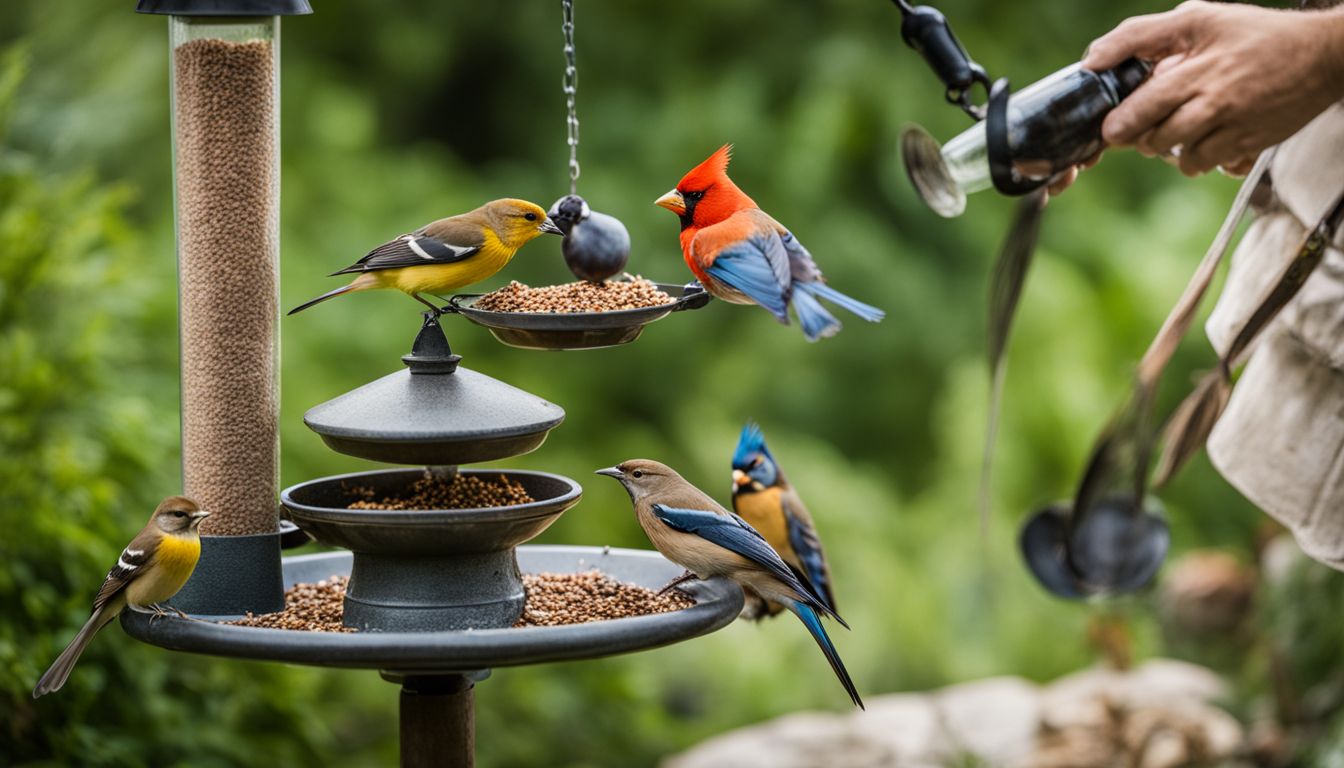
Bird feeding is crucial for birds during migration, providing them with a reliable food source as they travel long distances. Feeders become essential pit stops for birds, offering much-needed sustenance and energy to complete their journey.
By keeping feeders stocked with high-energy foods like suet and black oil sunflower seeds, we can aid migrating birds in reaching their destinations safely while also enjoying the privilege of witnessing these remarkable travelers up close.
In some studies have shown that migratory bird populations are declining due to habitat loss; maintaining bird feeders can help offset this decline by providing additional nourishment along the migration route.
Providing a safe environment
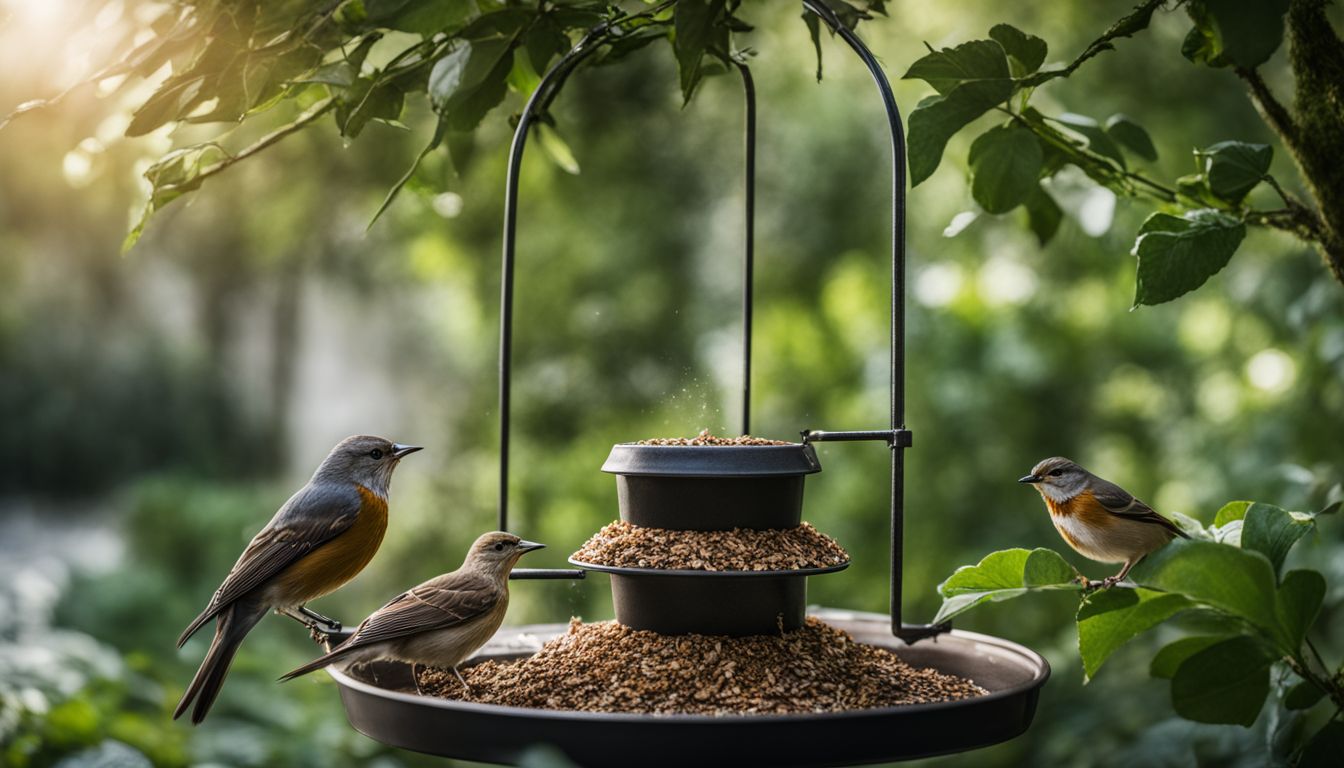
Supporting bird populations also involves providing a safe environment for them to access food, water, and shelter. This means ensuring that the bird feeders are well-maintained, clean, and placed in areas where birds can easily reach them but remain safe from predators.
It’s important to minimize risks to birds by preventing window collisions and creating a humane backyard habitat that promotes their safety and well-being. By doing so, we can help attract and support a diverse range of bird species while contributing to the overall health of our local bird populations.
Reducing loneliness
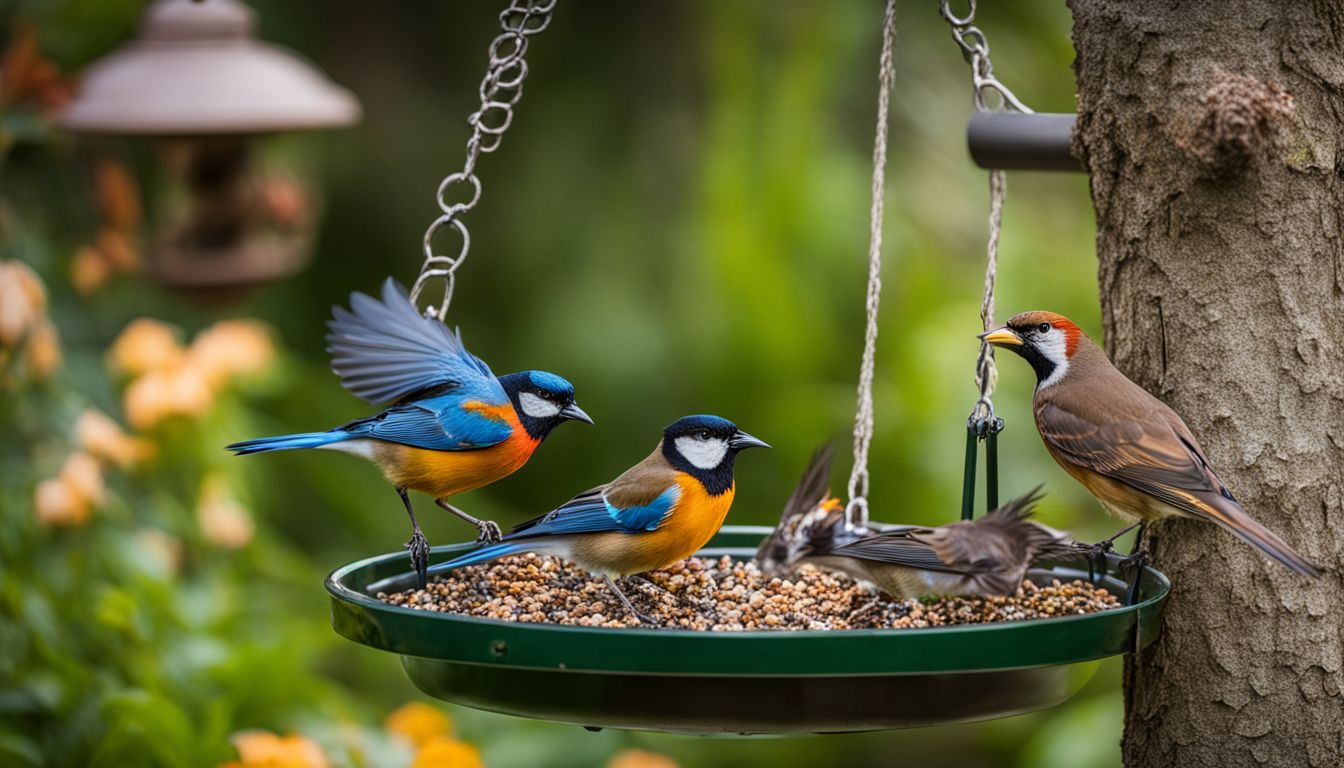
Bird feeding reduces loneliness by bringing the joy of nature into your backyard. Watching birds flutter around the feeder can bring a sense of companionship and peace. As I observe different bird species, it reminds me that I’m not alone in this world; there are other living beings sharing this space with me.
It’s estimated that one-third of adult Americans feed wild birds, showcasing the widespread appeal of bird watching as a way to alleviate loneliness.
Incorporating bird feeders into your yard attracts various bird species, providing an opportunity for daily interactions with these beautiful creatures. This helps create a sense of connection and belonging, reducing feelings of isolation and loneliness for many people.
Supporting native plants and insects
By providing a habitat that supports native plants and insects, we also create a welcoming environment for birds. Native plants and insects play an essential role in the ecosystem by offering natural sources of food and shelter.
When we support these elements in our yards or gardens, we contribute to maintaining a balanced ecosystem, ensuring that birds have access to the resources they need for survival.
It’s important to recognize that native plants can attract a diverse range of local bird species by providing them with natural food sources like seeds, fruits, nectar, or insects.
Considerations for Bird Feeders and Backyard Habitats
When setting up bird feeders and creating a backyard habitat, it’s important to take steps to prevent window collisions and minimize risks to birds. Creating a humane and safe environment for our feathered friends is crucial in supporting their wellbeing.
Preventing window collisions
When birds see reflections in windows, they may mistake them for open space and fly into the glass, causing injuries or even death. To prevent window collisions, consider applying decals or other markings to the outside of your windows.
These can help birds recognize that there’s a barrier present and avoid flying into the glass. Additionally, placing feeders either within 3 feet of windows or more than 30 feet away from them can reduce the likelihood of collisions as well.
Now let’s move on to discussing “Minimizing risks to birds”.
Minimizing risks to birds
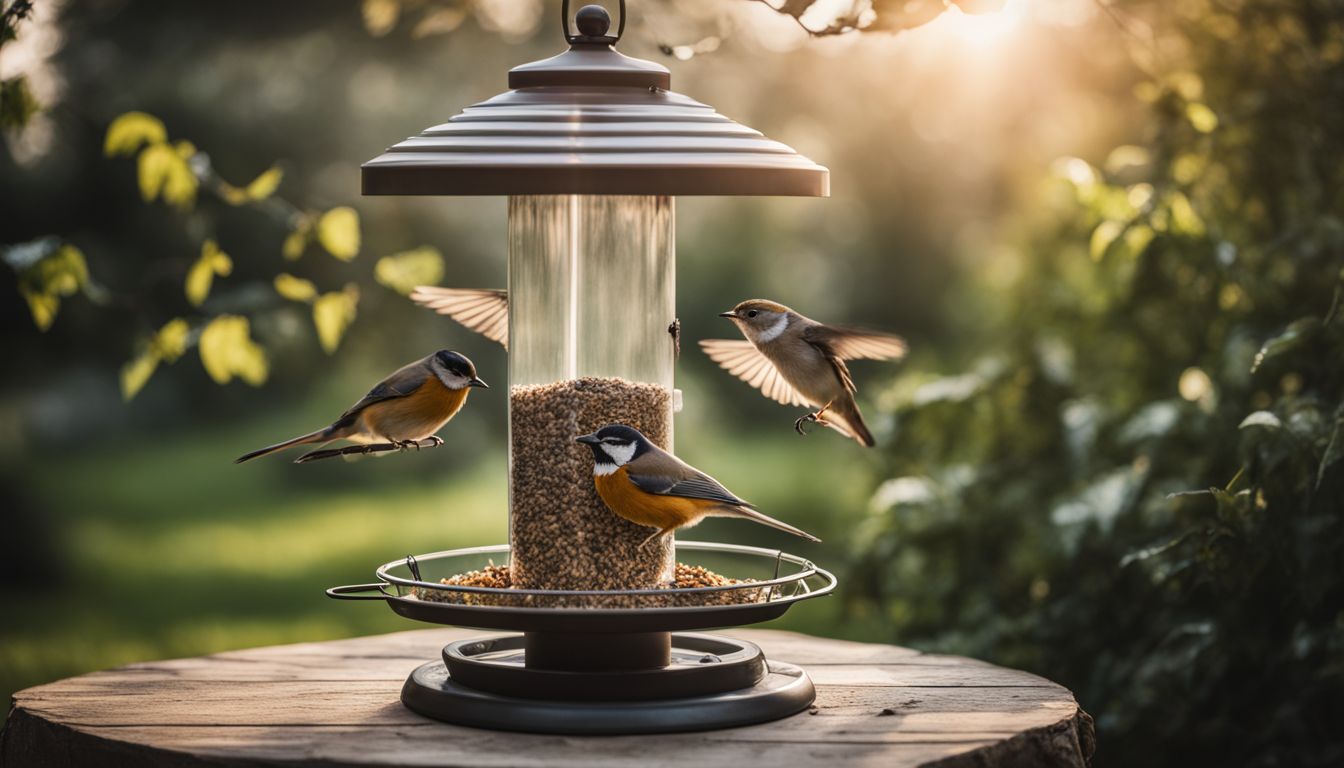
To ensure the safety of our feathered friends, it’s crucial to minimize risks in and around bird feeding areas. By choosing feeders that reduce window collisions or using window decals and films, we can prevent unnecessary harm to birds.
Positioning feeders close to natural cover like trees or shrubs provides quick escape routes from predators. Also, regular cleaning of feeders with a solution of one part bleach to nine parts water helps prevent the spread of avian diseases.
Creating a safe feeding environment is essential for the well-being of our beloved birds. It not only protects them from potential dangers but also promotes a thriving and sustainable ecosystem in our backyard habitats.
Creating a humane and safe habitat
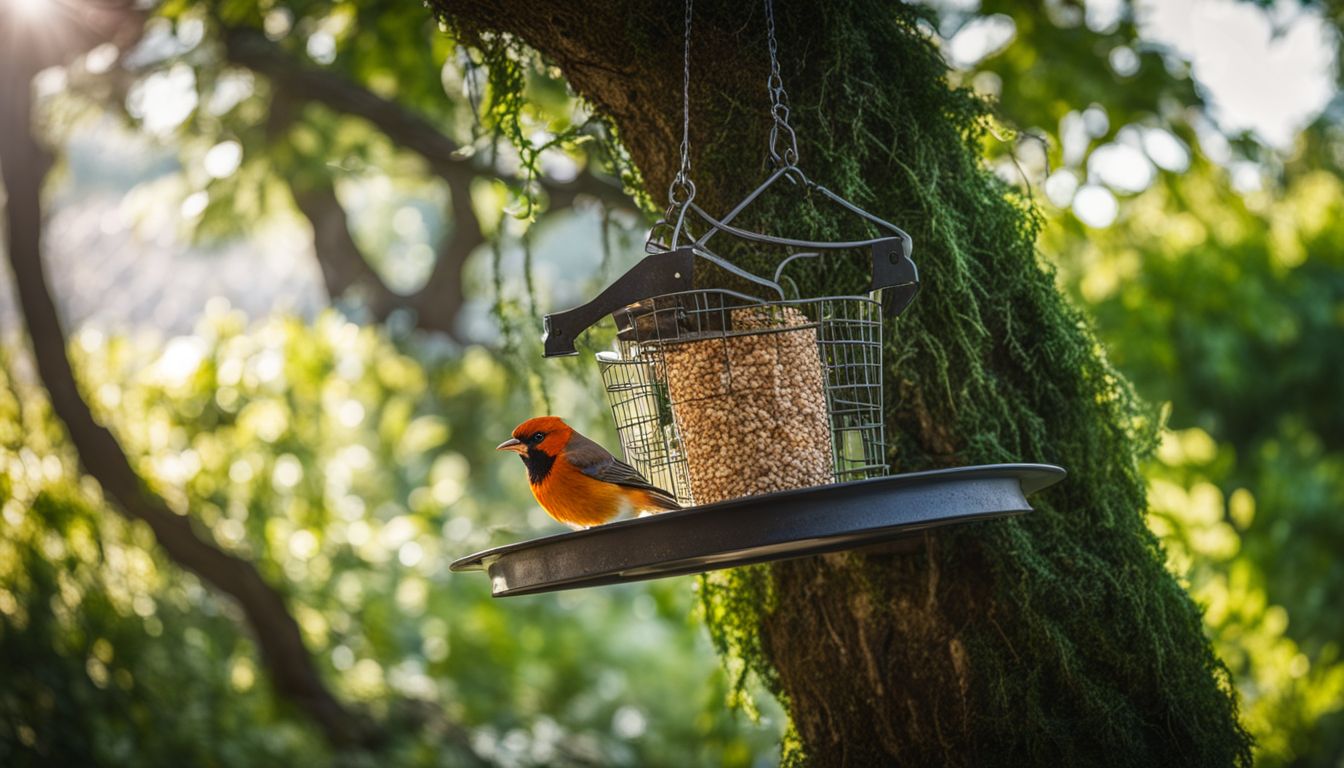
I make sure to create a safe and welcoming environment for the birds in my backyard. Placing bird feeders near trees or shrubs can provide cover, protecting them from predators while they eat.
I also ensure that the feeders are kept clean and maintained regularly to prevent the spread of diseases among the birds that visit. By using bird-friendly plants in my yard, I provide natural food sources and shelter for the birds, making it a more inviting habitat for them.
By considering these factors, I can help minimize risks to our feathered friends while providing a humane and secure space for them to enjoy their meals.
Conclusion
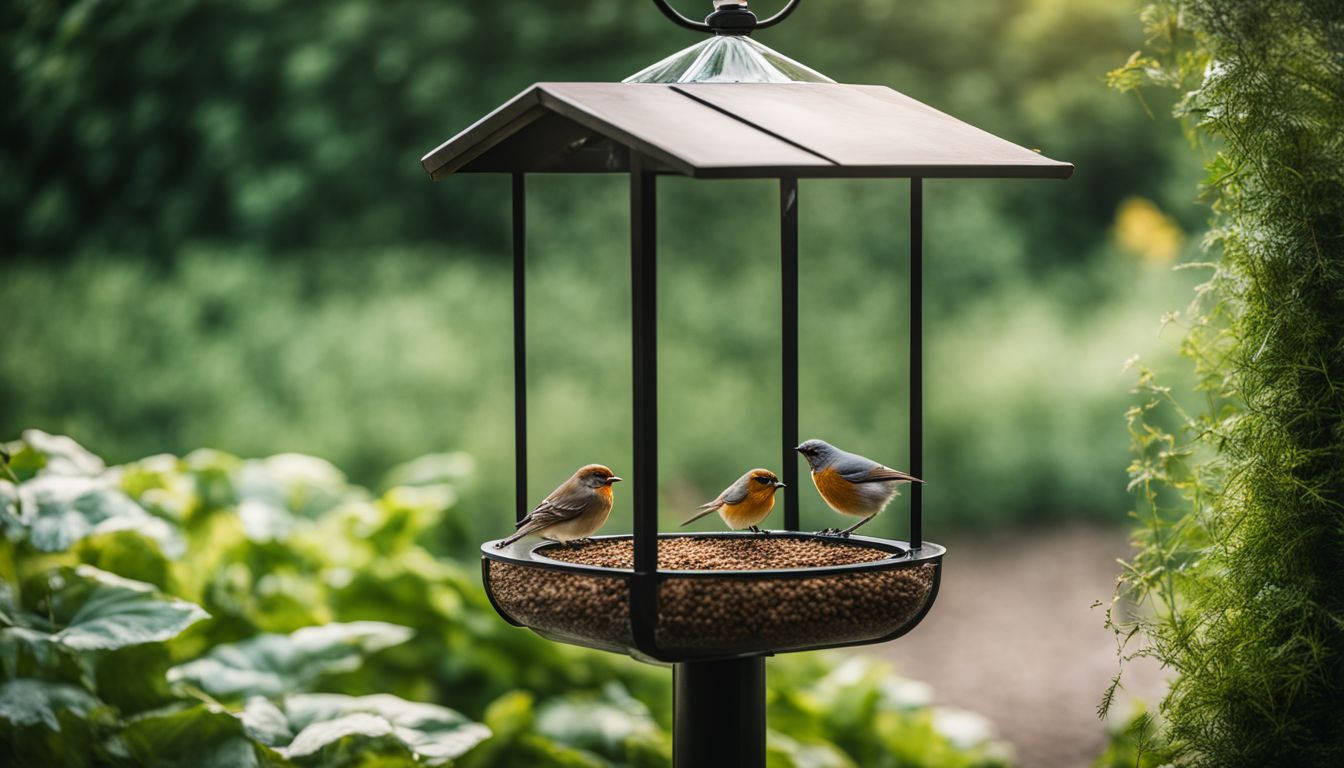
In conclusion, bird feeders play a vital role in supporting healthy bird populations by providing supplemental food and safe environments. They offer an enjoyable way to connect with nature while observing various bird species up close.
By choosing the right feeder, maintaining it properly, and being mindful of the backyard habitat, we can create a harmonious environment that benefits both birds and humans alike. Supporting bird populations through thoughtful feeding practices contributes to sustaining a balanced ecosystem and fostering greater appreciation for wildlife in our communities.
FAQs
1. Why are bird feeders important?
Bird feeders are important because they help birds during migration, provide food for garden birds, and bring environmental benefits by supporting the local ecosystem.
2. Can putting out a bird feeder in my yard help me feel less lonely?
Yes, backyard bird feeding can make you feel less lonely as it allows you to watch and enjoy the company of birds right from your home.
3. How do I attract birds to my yard with a feeder?
To attract birds to your yard, use the right bird feeding supplies in your bird feeder and consider adding bird-friendly plants to create a welcoming space for them.
4. What should I know about feeding wild birds at home?
When feeding wild birds, learn proper bird feeding techniques using a guide or tips on how much and what types of food to provide so you encourage good bird feeding habits.
5. Are there rules I need to follow when setting up my own bird-feeding station?
Yes, some places have specific laws or guidelines about where and how you can set up a station for attracting and encouraging proper behavior while providing food for birds.











